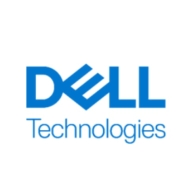

VxRail and Red Hat Hyperconverged Infrastructure compete in the hyperconverged infrastructure market. VxRail often has the upper hand in deployment convenience, while Red Hat stands out for its scalability and open-source flexibility.
Features: VxRail integrates with VMware environments and offers automated lifecycle management and simplified operations. Red Hat Hyperconverged Infrastructure provides a flexible, scalable solution, benefiting from open-source foundations and strong customization capabilities suited for organizations prioritizing interoperability.
Room for Improvement: VxRail may be challenged by higher initial setup costs and dependency on VMware environments, which might limit flexibility for some organizations. Red Hat Hyperconverged Infrastructure could improve by enhancing ease of deployment and reducing the complexity associated with its open-source nature. Both can benefit from refining support channels to improve customer experiences.
Ease of Deployment and Customer Service: VxRail is known for its straightforward deployment model with reliable VMware support, offering smooth integration into existing ecosystems. Red Hat Hyperconverged Infrastructure's deployment, while versatile, can pose challenges due to its flexible open-source nature, but benefits from community-driven support.
Pricing and ROI: VxRail often involves higher initial costs, but provides quick ROI for VMware-heavy organizations due to its seamless environment integration. Red Hat Hyperconverged Infrastructure offers a cost-effective setup, with long-term savings through its open-source foundation leading to a lower total cost of ownership, appealing to cost-conscious organizations.

Red Hat Hyperconverged Infrastructure - based on our leading OpenStack and virtualization platforms - provides co-located, scalable, software-defined compute and storage, driven by Red Hat Ansible Automation on economical, industry-standard hardware.
VxRail is a hyper-converged appliance based on VMware virtual SAN Software and is jointly engineered and built with VMware, for VMware, to enhance Vmware. VxRail software-defined architecture simplifies compute, storage, virtualization, and management. It will safeguard performance, reliability, and flexibility across your organization with a broad range of workloads and applications from business-critical to next-gen. With VxRail, you are covered.
VxRail is a single turn-key appliance that is a validated, fully integrated, pre-configured, pre-tested solution and offers non-disruptive scaling. Every node includes compute storage and IO. All-flash configurations can contain between 12-28 cores per node. The storage capacity options run from 7.6 TB to 19TB with either 256 GB or 512GB of memory. Hybrid appliances may have 6-20 cores per node, 3.6 TB to 10 TB of storage capacity, and 24GB to 256 GB of memory.
VxRail offers high availability fail-over, an active/active stretch cluster, and VSan Kernal integration. VxRail is a power-edged server with APIs built on automation. There are over 15 million different combinations of hardware available with VxRail. VxRail provides a simple, cost-effective solution that solves a large range of use cases. Additionally, you also get a mixed workloads automated system that is backed with fully automated system updates, and complete end-to-end lifecycle management all in a single two-rack appliance.
VxRail is a value-added suitable solution for distributed small to mid-sized enterprises, remote offices, private clouds, and virtual desktop infrastructure (VDI). You choose the deployment option that best suits your organizational needs, from appliance to integrated rack offerings, with or without networking, and it will be delivered to you, ready to deploy out-of-box.
If you know VMware, you know VxRail.
VxRail Features and Benefits
Reviews from Real Users
VxRail is an all-in-one solution: "You don't have to worry too much about the hardware and you don't have to work on integrating a storage device. We instead have this as an all-in-one solution and everything is available as a box."
VxRail is remarkable: “The cover points feature in VxRail is remarkable. It's unique. It has an intervention failover system as well as an automatic failover system, reaching clusters existing in VxRail…”
We monitor all HCI reviews to prevent fraudulent reviews and keep review quality high. We do not post reviews by company employees or direct competitors. We validate each review for authenticity via cross-reference with LinkedIn, and personal follow-up with the reviewer when necessary.